
Unusual & Offbeat Destinations in Cairo, Al Qāhirah, Egypt
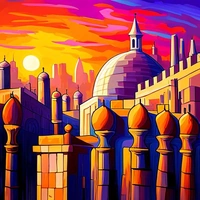
1. City of the Dead
This is a vast cemetery where people live among the tombs. It offers a unique perspective on Cairo’s housing crisis and depicts how spaces are repurposed in the city. The blend of life and death makes it unlike any other location in Cairo.
- Accessibility: Navigating the narrow streets may be challenging.
- Respect: It's important to be mindful of residents' privacy.
- Guided Tour: Consider hiring a guide for safety and informative insights.

2. Garbage City
Known officially as Manshiyat Naser, this area is where the city's waste collectors, or "Zabbaleen," reside and work. The community displays a unique recycling economy and process, reusing what others discard. This area also features the stunning Cave Church.
- Hygiene: Prepare for less than ideal sanitation conditions.
- Photography: Always ask for permission before taking photos.
- Transportation: Difficult to reach by public transport, consider a private hire.
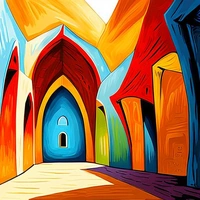
3. Cave Church of Saint Simon
Nestled within Garbage City, this church is carved out of the Mokattam mountain rocks. It stands out with its massive capacity to hold thousands and beautifully carved biblical murals. The sight of worship in such an unconventional location is unforgettable.
- Accessibility: Steep climbs are required to reach the site.
- Schedule: Check for events or services that might affect visiting hours.
- Attire: Dress conservatively since it is an active place of worship.
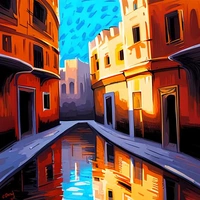
4. Islamic Cairo's Hidden Gem
Beit El Seheimy: This well-preserved Ottoman era house gives a unique glimpse into historical domestic architecture away from typical tour paths. Its intricate mashrabiyas and courtyard offer insight into past lifestyles. Unlike more commercialized sites, it provides a quieter look at history.
- Entrance Fee: Ensure you have local currency for ticket purchase.
- Photography: Flash photography might not be allowed inside.
- Timing: Visiting on weekdays may reduce crowd presence.
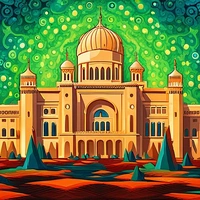
5. Abdeen Palace
This presidential palace-turned-museum offers an opulent display of wealth with its dazzling rooms and objects. Its proximity to Tahrir Square makes it a great detour. The mix of European and Egyptian influences is particularly unique in its design.
- Photography: Restricted in many areas, so check guidelines first.
- Tour Duration: Plan for at least 2-3 hours to explore thoroughly.
- Reservation: Checking for open days is advised as political events can close access.
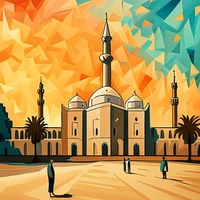
6. El-Hakim Mosque
Standing apart from Cairo's other mosques, El-Hakim displays stunning Fatimid architecture. The wide-open courtyard and towering minarets provide breathtaking views that set it apart. Its historical significance is echoed in the tales of its enigmatic namesake, Al-Hakim bi-Amr Allah.
- Modesty: Dress appropriately to respect cultural norms.
- Timing: Early morning visits offer a tranquil experience.
- Donations: Contributions for maintenance are appreciated but not required.
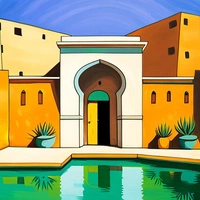
7. Nilometer at Rhoda Island
While not as famous as other monuments, this ancient structure was crucial for measuring the Nile's water levels. It's a testament to early Egyptian ingenuity in managing agriculture and understanding nature's cycles. The calm riverside location is a pleasant escape from city chaos.
- Accessibility: It might be tricky to find without a local guide.
- Timing: Combine with a visit to the nearby Manial Palace.
- Entry Fee: Bring cash for the modest entry fee.
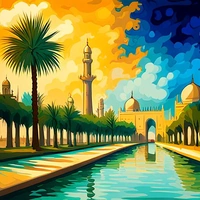
8. Al-Azhar Park
Built on a former dumpsite, this park is now a beautiful green space offering panoramic views over Cairo. It's a perfect spot for a picnic or rest after exploring the bustling city. The contrast between lush greenery and city sprawl is striking.
- Operating Hours: Check closing times to maximize visiting hours.
- Facilities: Dining options are available inside the park.
- Admission: Nominal entrance fee supports park maintenance.
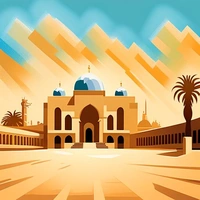
9. The Coptic Museum
This museum houses a vast collection of Coptic art, unavailable elsewhere in Cairo. It offers insights into the ancient Christian heritage of the region, with artifacts spanning centuries. The tranquil setting provides a unique juxtaposition to typical Islamic influences.
- Photography: Permitted with restrictions, so inquire upon entry.
- Language: Displays include English descriptions for accessibility.
- Cloakroom: Large bags must be checked, so plan accordingly.
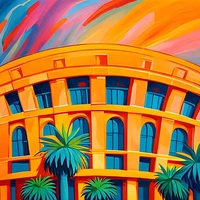
10. House of the Nation (Saad Zaghloul Museum)
This site is dedicated to Egypt's famed revolutionary leader, Saad Zaghloul. The museum captures the spirit of Egypt's independence movement with personal artifacts and stories. The blend of art, history, and politics offers a unique educational detour.
- Audio Guides: Available for a more detailed narrative.
- Limited Opening Days: Check the schedule ahead of your visit.
- Small Size: Expect a brief visit, as the museum isn't extensive.
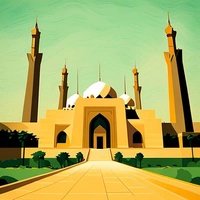
11. Museum of Islamic Art
While other museums emphasize pharaonic history, this highlights Islamic cultural contributions. It holds an unparalleled collection of textiles, ceramics, and manuscripts. The blend of art and historical narrative is compelling.
- Lighting: Bringing a small flashlight may help in dimly lit areas.
- Crowd: The museum is less crowded than major sites, offering peace.
- Location: Situated near busy areas, plan transportation accordingly.

12. The Solar Boat Museum
This is home to the reconstructed Solar Boat of Pharaoh Khufu, a unique artifact tied to ancient Egyptian beliefs and not typically highlighted in broader history tours. The craftsmanship and size of the ancient boat are awe-inspiring.
- Timing: Best combined with a trip to the Pyramids for efficiency.
- Preservation: Keep a respectful distance from artifacts.
- Audio Guide: Provides interesting historical context.

13. Umm Kulthum Museum
Dedicated to one of Egypt's most cherished singers, it offers an engaging look into 20th-century Egyptian music and life. The array of costumes and recordings captures her legacy in ways words cannot. The museum celebrates a cultural icon often overlooked by non-locals.
- Small Exhibit: This is a quick stop, not a day-long visit.
- Language: Displays largely in Arabic; consider a guide if necessary.
- Inspired Merchandising: Purchase unique memorabilia if interested.
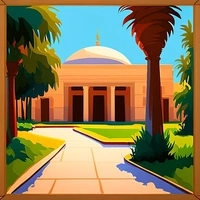
14. Gayer-Anderson Museum
Formed of two old houses connected and restored, this museum displays a stunning collection of art and furniture. The unique blend of traditional Egyptian design with the personal touch of Gayer-Anderson is enchanting. Located next to the Ibn Tulun Mosque, it pairs well with a cultural exploration day.
- Entrance Fee: Modest charge is collected at entry.
- Stairs: Prepare for steep and narrow staircases inside.
- Temporal Displays: Check for seasonal exhibitions.
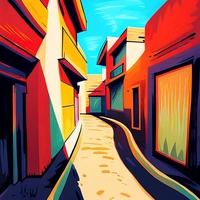
15. Zabbaleen Eco-Arts Village
This is a community-driven initiative where trash is transformed into stunning art pieces. Visitors explore their creative projects, learning sustainability from those who practice it daily. The colorful displays turn garbage into a celebration of recycling.
- Participation: Engage with artisans for media workshops.
- Support: Consider purchasing art pieces to support the community.
- Directions: Hard to find, using a detailed map or guide is recommended.
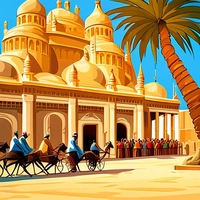
16. The Royal Chariots Museum
Newly opened, this museum showcases opulent carriages used by royal families. The intricacy and craftsmanship offer a window into the lavish lifestyles of Egyptian royalty. Its niche focus makes it an undiscovered gem for many tourists.
- Ticketing: Limited visitor capacity, plan prompt booking.
- Maintenance: Enhanced care provided to sensitive displays.
- Surroundings: Combine with neighboring Zamalek district visit.
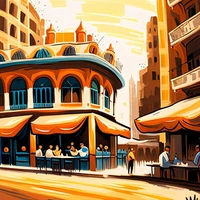
17. El-Fishawi Café
Nestled in the Khan El Khalili bazaar, this historic café has operated for over 200 years. Frequented by Nobel Laureate Naguib Mahfouz, it's a perfect spot to feel the city's literary and cultural pulse. The heart of Cairo's social life beats here amid tea and shisha.
- Busy Time: Late evening offers the best ambiance despite crowds.
- Hygiene: Confirm the food and drink quality meets personal standards.
- Nearby Shopping: Ideal break point during bazaar exploration.
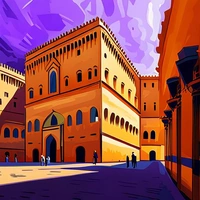
18. Heliopolis' Palais Hindou
Established as part of an elaborate hotel in Cairo's Heliopolis district, this Hindu-styled building is an architectural anomaly. The intricate carvings and spiritual motifs make it a unique study in cultural fusion. Although not open to the public, its façade lends to stunning photographs.
- Permission: Confirm with local authorities about exterior photography permission.
- Locale: Situated near other colonial-era structures—walking exploration recommended.
- Relevance: Interest predominantly appeals to architecture enthusiasts.
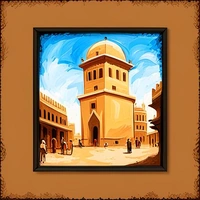
19. Bab Zuweila
This medieval gate towers in the heart of Islamic Cairo and offers spectacular views for those who climb its stairs. While other gates exist, its historical significance as a ceremonial site for executions makes it distinct. It's a testament to Cairo's medieval past, not commonly explored in tours.
- Climbing: Prepare for physically demanding staircases.
- Opening Hours: Check operating times for full exploration.
- Lighting: Sunset visits provide magical lighting for photos.
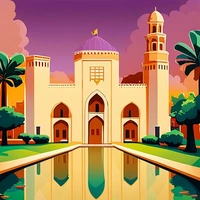
20. El Shorbagy Palace
Though in need of restoration, this lesser-known palace showcases fading royal grandeur. Its neglected condition reveals Cairo's shifting focus away from its built heritage. Visiting here transports you back to a time of opulence in an urban setting.
- Preservation Status: Limited upkeep means fragile conditions.
- Area: Located in a quiet district conducive to unhurried exploration.
- Safety: Consider a daytime visit as area lighting is limited after dark.
